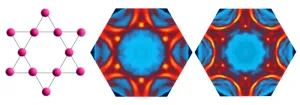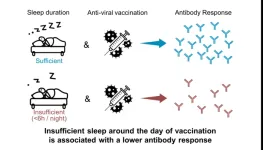Selecting the right suite of BSH-producing bacteria is critical, because the study found that interactions between BSHs and bile acids differ depending upon the type of bacteria the BSHs come from.
Certain bacteria within the gut microbiota contain BSH enzymes, which chemically modify bile acids. Bile acids are made in the liver and play an important role in modulating cholesterol levels, regulating fat absorption, shaping the immune system, and affecting which bacteria can colonize the gut.
Although researchers had long suspected a connection between BSHs from beneficial bacteria, the bile acid pool, gut microbial composition and host health, until now relatively little was known about how BSHs function and their potential impacts on host health.
“The old dogma – that BSHs are needed for gut colonization because they render toxic bile acids non-toxic – oversimplified what’s actually happening,” says Casey Theriot, associate professor of infectious disease at North Carolina State University and co-corresponding author of the study.
“The reality is that BSHs’ interactions are context-dependent, meaning they’re affected by the type of bacteria they come from,” Theriot says. “And they don’t just interact with bile acids produced by the host. BSHs in the microbiota can create and interact with a new class of bile acids called microbial conjugated bile acids (MCBAs) – bile acids that we didn’t even know existed until recently.”
In the new study, Theriot led a collaborative research team that included microbiologists, chemists, biochemists, and clinicians from NC State, the University of North Carolina at Chapel Hill, and the University of California, San Diego on a deep dive into BSHs.
Specifically, they looked at hundreds of BSHs from different Lactobacillaceae bacteria (which houses most probiotic strains) and then included BSHs from the gut microbiota (nearly 1,000 unique BSHs in total).
Matthew Redinbo, Kenan Distinguished Professor of Chemistry in UNC-Chapel Hill’s College of Arts and Sciences, and his departmental colleagues (led by then graduate student Morgan Walker) were instrumental in determining the structure of BSHs and how they “choose” to interact with bile acids, by either adding or taking away certain amino acids.
“We found the tiny molecular fingerprint that defined whether a BSH would ‘turn left’ or ‘turn right’ in terms of what they processed,” Redinbo says. “Knowing that allowed Casey’s team to steer the bile acid pool in whatever direction they wanted.”
The researchers used a cocktail of Lactobacillus BSHs to figure out if they could change the bile acid pool enough to alter C. diff colonization in both human stool samples collected from patients susceptible to C. diff infection (CDI) and in a mouse model of CDI. In both human stool samples and mice, the researchers saw that pre-treatment with BSH cocktails impacted C. diff colonization. Interestingly, the researchers noted elevated levels of MCBAs in the gut microbiota of the BSH-treated mice.
To determine whether the MCBAs were also involved in inhibiting C. diff germination and growth, they tested the MCBAs against C. diff in vitro. In most cases, the presence of MCBAs inhibited multiple steps of the C. diff life cycle.
“This is more evidence that BSHs are driving changes in the bile acid pool – including making MCBAs – that could serve to inhibit C. diff,” Theriot says. “We’ve uncovered a new function for BSH enzymes.”
“This work highlights the importance of BSHs as key intestinal enzymes and promising new therapeutics,” says Matt Foley, research scholar at NC State and co-first author of the study. “Using BSHs in combination with other strategies may offer a new approach to treat C. diff.”
The researchers see the work as the first step toward potential probiotics that could be customized to protect against a variety of bacterial infections and intestinal diseases. But first, more work must be done to determine how and why the BSHs decide which MCBAs to produce and/or target.
“This is an important illustration of how deciphering the biochemical and genetic basis for probiotic functionality both leads to a better understanding of how we can combat gut disease with novel modalities, and also practically design and formulate next-generation commercial probiotics,” says Rodolphe Barrangou, the Todd R. Klaenhammer Distinguished Professor in Probiotics Research at NC State and co-corresponding author of the study.
The work appears in Nature Microbiology and was supported by the National Institutes of Health, the National Science Foundation, IFF Corporation and the U.S. Environmental Protection Agency. The MCBA detection work was done by Erin Baker, formerly of NC State and currently at UNC-Chapel Hill, Allison Stewart of NC State, and Emily Gentry and Pieter Dorrestein from UCSD.
-peake-
Note to editors: An abstract follows.
“Bile salt hydrolases shape the bile acid landscape and restrict C. difficile growth in the murine gut”
DOI: 10.1038/s41564-023-01337-7
Authors: Matthew H. Foley, Allison K. Stewart, Sarah O’Flaherty, Garrison Allen, Meichen Pan, Caroline Perkins, Molly E. Vanhoy, Erin S. Baker, Rodolphe Barrangou, Casey M. Theriot, North Carolina State University; Morgan E. Walker, Shakshi Patel, Violet V. Beaty, Joshua B. Simpson, Michael K. Dougherty, Sarah K. McGill, Ajay S. Gulati, Matthew R. Redinbo, University of North Carolina at Chapel Hill; Emily C. Gentry, Pieter C. Dorrestein, University of California San Diego
Published: March 13, 2023 in Nature Microbiology
Abstract: Bile acids (BAs) mediate the crosstalk between human and microbial cells and influence diseases including Clostridioides difficile infection (CDI). While bile salt hydrolases (BSHs) shape the BA pool by deconjugating conjugated BAs, the basis for their substrate selectivity and impact on C. difficile remain elusive. Here we survey the diversity of BSHs in the gut commensals Lactobacillaceae, which are commonly used as probiotics, and other members of the human gut microbiome. We structurally pinpoint a loop that predicts BSH preferences for either glycine or taurine substrates. BSHs with varying specificities were shown to restrict C. difficile spore germination and growth in vitro and colonization in pre-clinical in vivo models of CDI. Furthermore, BSHs reshape the pool of microbial conjugated bile acids (MCBAs) in the murine gut, and these MCBAs can further restrict C. difficile virulence in vitro. The recognition of conjugated BAs by BSHs defines the resulting BA pool, including the expansive MCBAs. This work provides insights into the structural basis of BSH mechanisms that shape the BA landscape and promote colonization resistance against C. difficile.
END




